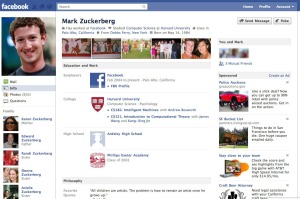How do the affordance of a networked media culture (hyperlinks, multimedia, sharing etc.) enhance online communication?
Multimedia, hyperlinks, and sharing are just some of the most important parts of online communication. They have enhanced the way we use the World Wide Web and have changed the way we interact with others on the internet. Affordance is the different kinds of benefits media culture involves. For example; the affordance of media culture allows people to connect with others online but constrains by lack of social relationships offline (Chandler, D., Munday, R. (2011, p. 9). People become more engaged with the media when sharing different things online such as text posts, photos, news articles, and music.

This image represents multimedia and all the different types of social media on the internet. It is an effective interpretation of how social media has become a phenomenon and a big part of society.
Hyperlinks have become one of the most useful tools online simply because it gives us access from point A to point B in just a click, but it is not that simple. The idea of hyperlinks is very simple which is to “automatically brings the user to a particular point in a cited work – it is deceptively simple” This gives us a general understanding what hyperlinks are and what the purpose of them are. (Halavais, 2008). It is stated that “But in trying to understand what the larger social effects of hyperlink networks are, it is not enough to be able to define a hyperlink, we need to understand its nature, its use, and its social effects” (Halavais, 2008). This simply means that we have to understand the meaning behind hyperlinks and how the use of them effect our use of online communication.
This is an example of a Facebook profile of Mark Zuckerberg, co-founder of Facebook Inc.
The way we share certain things online with others on networks such as Facebook, Twitter and YouTube shows not only the different ways we can interact with others, but over time you can see the development of how media culture has changed. Before hyperlinks, multimedia and sharing became a big thing and online communication was very basic. The internet did not have all these new features we have today which changes the whole idea of communicating online. Now, sharing photos, videos online has advanced how we share our thoughts and feelings online. The way we learn about world wide news is through videos we see on Facebook or someone has tweeted about something and this is how we generally hear about things. Social media has become a phenomenon and millions of people all use many social media.
This short video talks about the phenomenon of social media and how it has become a huge part of our lives today.
The affordance of media culture has enhanced online communication by giving people the possibility to understand the meaning of something knew just by looking at it. Multimedia in today’s society revolves around the advanced technology but it is mainly how we use several types of media such as texts, graphics, audio and interactivity. The biggest impact to the modern society of online communication would be multimedia and they way it involve everything we do on the internet because everything we do, watch, say online is all multimedia. All of these that have been mentioned which is hyperlinks, sharing and multimedia all have changed the media culture in a way that without it, we would not be able to interact online the way we do today.
References:
Chandler, D., Munday, R. (2011). “Dictionary of Media and Communication” Published by: Oxford University Press, New York
Halavais, A. (2008). “The Hyperlink as Organizing Principal” The Hyperlinked Society: Questioning Connections in the Digital Age. Ann Arbor, MI. Michigan UP, 2008
Hinton, S. Hjorth, L. (2013) “Understanding social media” Published by: SAGE Publications Ltd; 1 edition (June 26, 2013)
